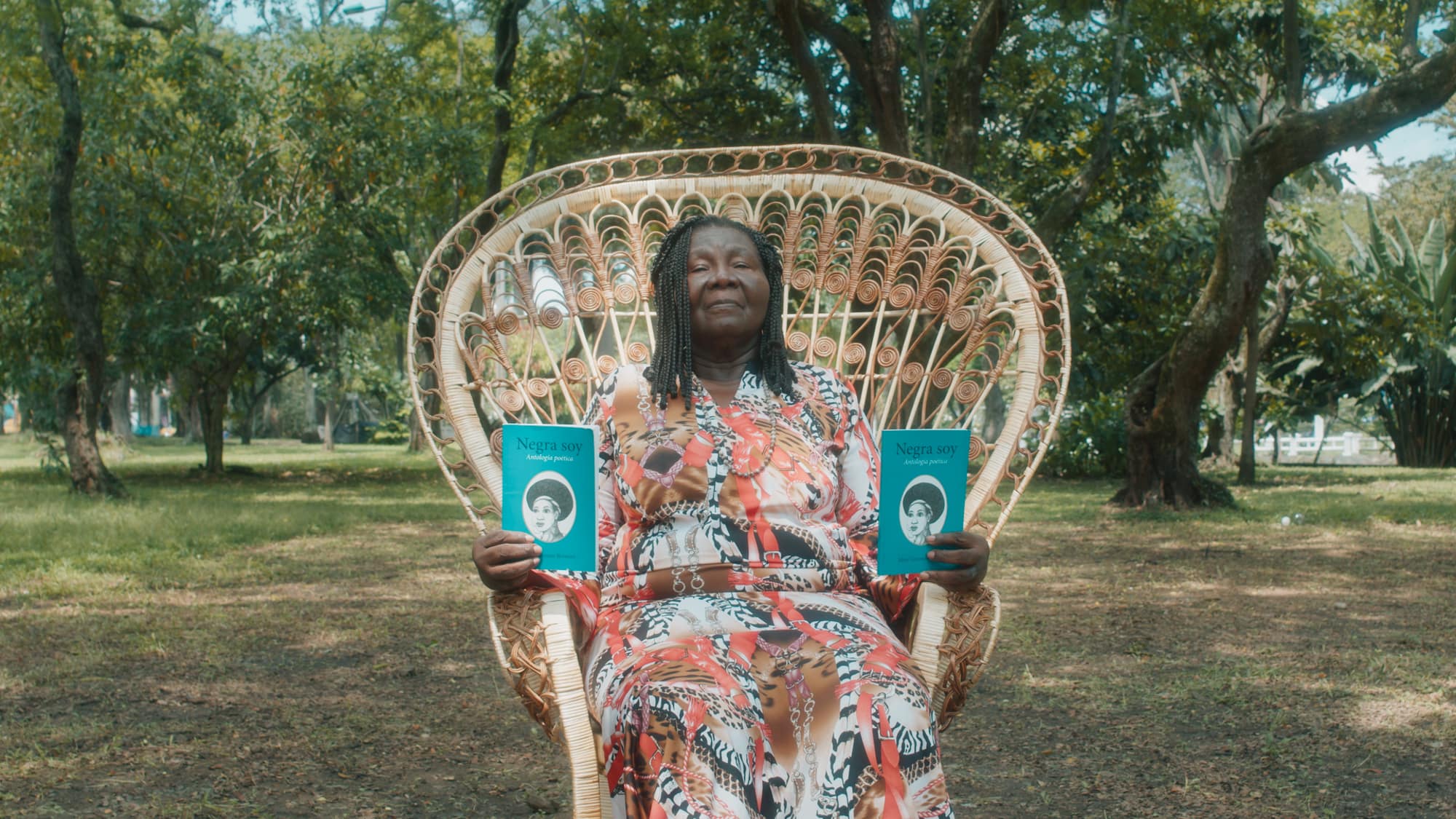
In the documentary Pensar Sintiendo, Marcela Angulo explores the diversity of Afro identity in a poetic key. The Colombian author suggests a ‘sensory gathering’ through which she aims to convey “the power, discomfort, joy, and above all, the creativity that has been the fundamental resource through which Black communities in the Americas have overcome the many and varied attempts to harm us.”
By Alonso Almenara
Four individuals from different backgrounds, experiences, and genders respond to the question: What does it mean to be a Black person in Colombia? This is the premise of Pensar Sintiendo (Thinking by Feeling), a documentary produced by Señal Colombia and premiered last year. Filmmaker Marcela Angulo aimed to make an original contribution to her country’s media culture, which she believes is marked by a disturbing absence of Afro characters and experiences. ‘I studied Audiovisual and Multimedia Communication here in Colombia. I spent three years in Argentina studying writing because I got tired of novels and said: I want to write my own,’ she recalls. After working for years in Colombian public television, she began undertaking independent audiovisual projects, such as ‘Bogoblack,’ a love story between two Black individuals set in the capital. She recently coordinated an Afro narrative panel for the Paramount streaming channel. ‘It’s nice that platforms are trying to include people excluded from the narrative,’ she said. Pensar Sintiendo is her most ambitious project to date: an experimental and visually dazzling film in which she brings together the lessons and reflections she developed on the long journey toward recognizing her identity.
Filmed in the city of Tumaco, in the department of Nariño, southwestern Colombia, the film bears a title that alludes to the concept of ‘Sentipensar‘ — the act of working together thought and feeling — introduced by Spanish professor Saturnino de la Torre in his creativity classes in the 1990s. A concept that, for Angulo, is closely related to the everyday experience of Afro communities. ‘I have always considered the distinction between the body and the soul, or between thinking and feeling, problematic — categories that are now being reevaluated,’ she explains. ‘What I do is a conscious exercise of telling myself: How does this thought feel in my heart? And how does this feeling in my heart translate into thought in my mind? From there, I try to express myself in my work.’
This approach is reflected in the film, which the author describes as an ‘audiovisual gathering.’ ‘For Afro communities, a gathering (tertulia) is circular: it has that quality of starting at a point and returning to it. It’s not about producing conclusive speeches but creating a space where sharing can happen freely. In ‘Feeling by Thinking,’ the interest lies in reconstructing that circle where one feels, thinks, shares, critiques, laughs, and cries.’
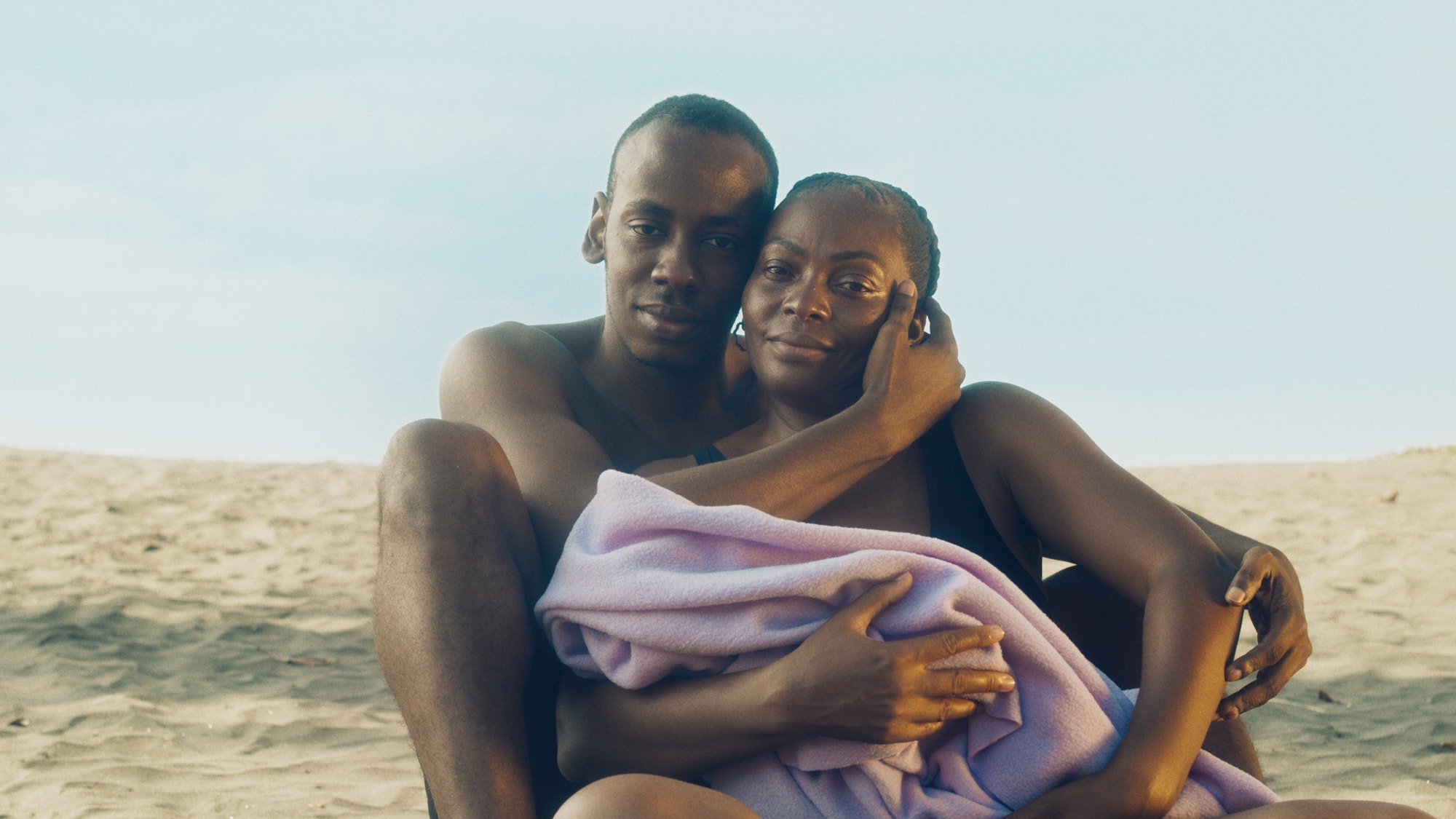
“This awareness of being Black came to me when I was already quite grown up. I’m 34 now, and it was really in my early twenties, when I went to Buenos Aires and experienced racism differently, that I understood I was Black.”
For this project, you collected testimonies from Black Colombian individuals of different social classes, genders, and sexual orientations, including yourself. What common traits did you find in these stories? What elements caught your attention?
In Colombia, the Black communities mostly come from the Pacific and Atlantic Coast, and it’s often said that they are very different. I don’t come from either of these regions because I was born in Bogotá, but my Black heritage is from the Pacific. The intention was to find something that underlies Black people and makes us Black beyond where we come from. So, rather than finding common points, what interested me was bringing together different cultural expressions, especially dance, music, and oral traditions, and showing how despite these differences, we can still connect.
For example, I brought together a group of Bullerengue dancers, traditional music from the Atlantic Coast, and a Currulao musical group, a typical genre from the Pacific. And it worked: they were able to create incredible music that sounded great together, and the dancers were able to enjoy it and create beautiful choreographies. As for the oral expressions, some are quite harsh, like the story of Eleguá, a transgender indigenous woman whose testimony is included in the film. But on the other side, there’s teacher Mary Grueso, who emphasizes the pride of being Black. And in between, there’s the ‘Decimero,’ who gathers both positions. He says, ‘Yes, we are Black and proud, and I’m a flavorful Black person, but we’re also struggling politically, lacking recognition.’ So, let’s say I was interested in working with a broad range of people, discussing diversity rather than finding common ground of what it means to be Black.”
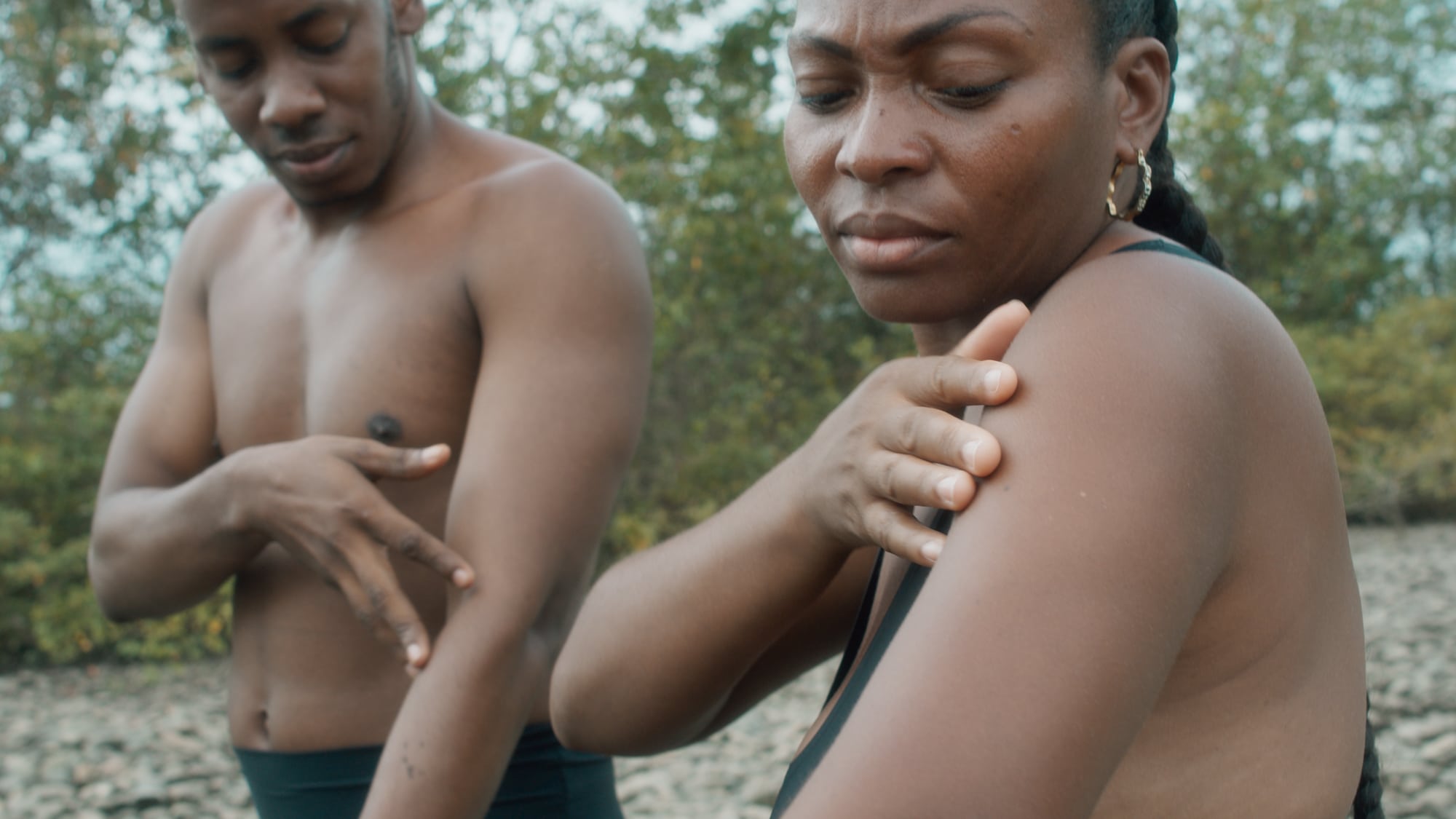
How did this project begin?
The project started last year with Señal Colombia’s coproduction market, the country’s most crucial public channel. I attended an event called Diverse Connections, where I began talking with several producers from the channel.
My idea was to create something that would incorporate my own story as one of its elements. My father is from the Pacific, but my mother is from Bogotá. My father is Black, but my mother is of mixed white heritage. And I never really grew up with him. So this awareness of being Black came to me when I was growing up. I’m 34 now, and it was really in my early twenties when I went to Buenos Aires and experienced racism differently; then I understood I was Black.
I know it might sound funny, but that’s how it happened. And it was only then that I truly started wanting to understand what this is, what it entails, as we say in Bogotá, what it means to be a Black person in Colombia. That’s when I began to read about discrimination, racism. That’s where the motivation to make the documentary came from. And for me, the approach was always experimental. The producers were a bit nervous.
“There is nothing on Colombian television that shows Black people in a state of tranquility, joy, and communion as they appear here.”
The proposal is well-crafted in terms of composition, post-production work, etc. What were you interested in achieving visually?
What I was clear about from the beginning was that, in addition to the testimonies, the documentary would include music and dance and bring together Afro people from different parts of the country. Then, while looking for visual references, the idea came to me of using inverted images of trees or the sea: turning landscapes upside down so that the sea blends with the sky. I liked that because it connects conceptually with the experience of Black individuals who, on the one hand, often feel pride in their roots but who also constantly feel frustrated because one has to deal with adverse conditions or the experience of racism and discrimination, which is very strong, unfortunate, and painful. I think that, as Black people, we have specific resources both physically and intellectually. Still, we are also hindered by specific social situations that are not easy to combat, and that force us to be in a position of resistance. And sometimes, yes, one wants to resist, but there are also days when I don’t want to fight. I don’t have the energy for that.
Once that connection was established, I had what I needed to experiment visually. Another critical factor that had a significant impact in this regard is the documentary’s director of photography, Juan Sebastián Bustos, a photographer from Cali who, although not Afro, has a strong connection with Afro culture because Cali is a very Afro-centric city. Furthermore, he has always been interested in culture and community and has filmed much in the Pacific region. Working with him was a good decision because he quickly grasped the concept and enriched it with a very subtle sense of composition, with the play of bodies, balanced and aesthetic postures, and light.
On the other hand, I was interested in contrasting the testimonies, some of which were quite powerful, with images where these Black individuals would feel at ease in the world. From there, I managed the staging of bodily expressions.
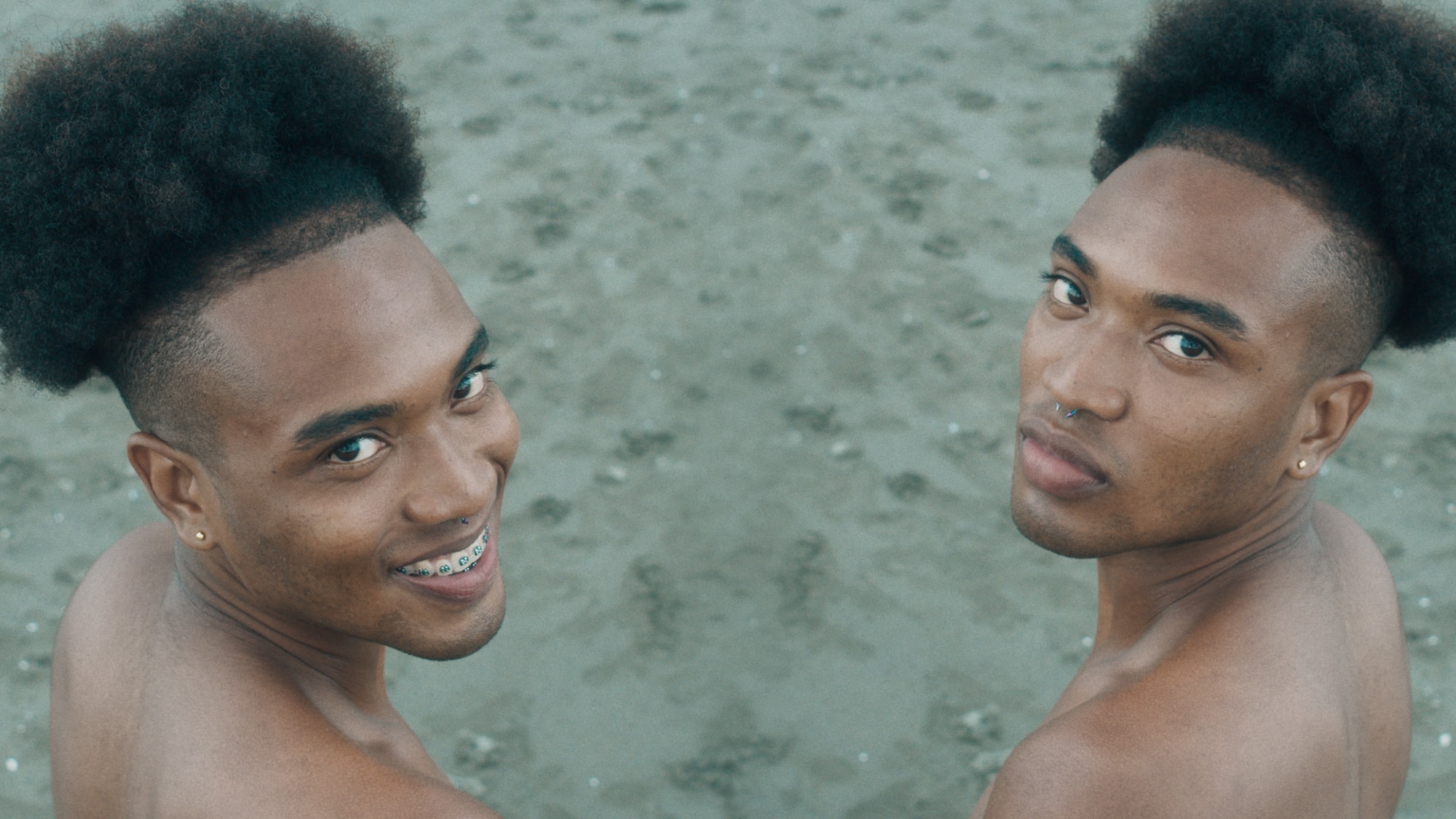
Do you think the images of Black people that typically appear in Colombian media negatively affect this community, or at the very least, do not contribute to improving their situation?
Yes, of course. Unfortunately, the stereotype of Black people is closely associated with poverty, the periphery, forced labor, and solitude. It wasn’t easy to align this documentary with the expectations of the channel producers. For instance, the initial cut had no voiceover from me. It only included reflections and dances. The producers didn’t understand it at all. I did make some changes that I felt were necessary to clarify the narrative. Still, I also told them that, regardless of that aspect, they needed to recognize the value of these images, which are very authentic. There is nothing on Colombian television that shows Black people in a state of tranquility, joy, and communion as they appear here. And that was enlightening for them.
Many of the comments I’ve received about this work are precisely about that: they say how good it is to see Afro people in other dispositions, expressing different emotions because it’s very tiresome always to be portrayed in the same way. And not only that, but it’s disturbing that transgender individuals are not even considered in the Colombian media sphere. It’s inexplicable to me that they are not present in our time. So much effort and insistence are needed to get television channels to include different imaginaries, genders, and ethnicities.
For example, in the production, I’m currently working on for a national private channel, there’s only one Black actor out of a cast of twenty people. With indigenous people, it’s worse – you never see them in soap operas. It’s disheartening for our communities not to see ourselves represented in that public media discourse. Still, it’s also unfortunate that society is missing out on the opportunity to acquire knowledge and recognize what is part of the culture to which they belong.
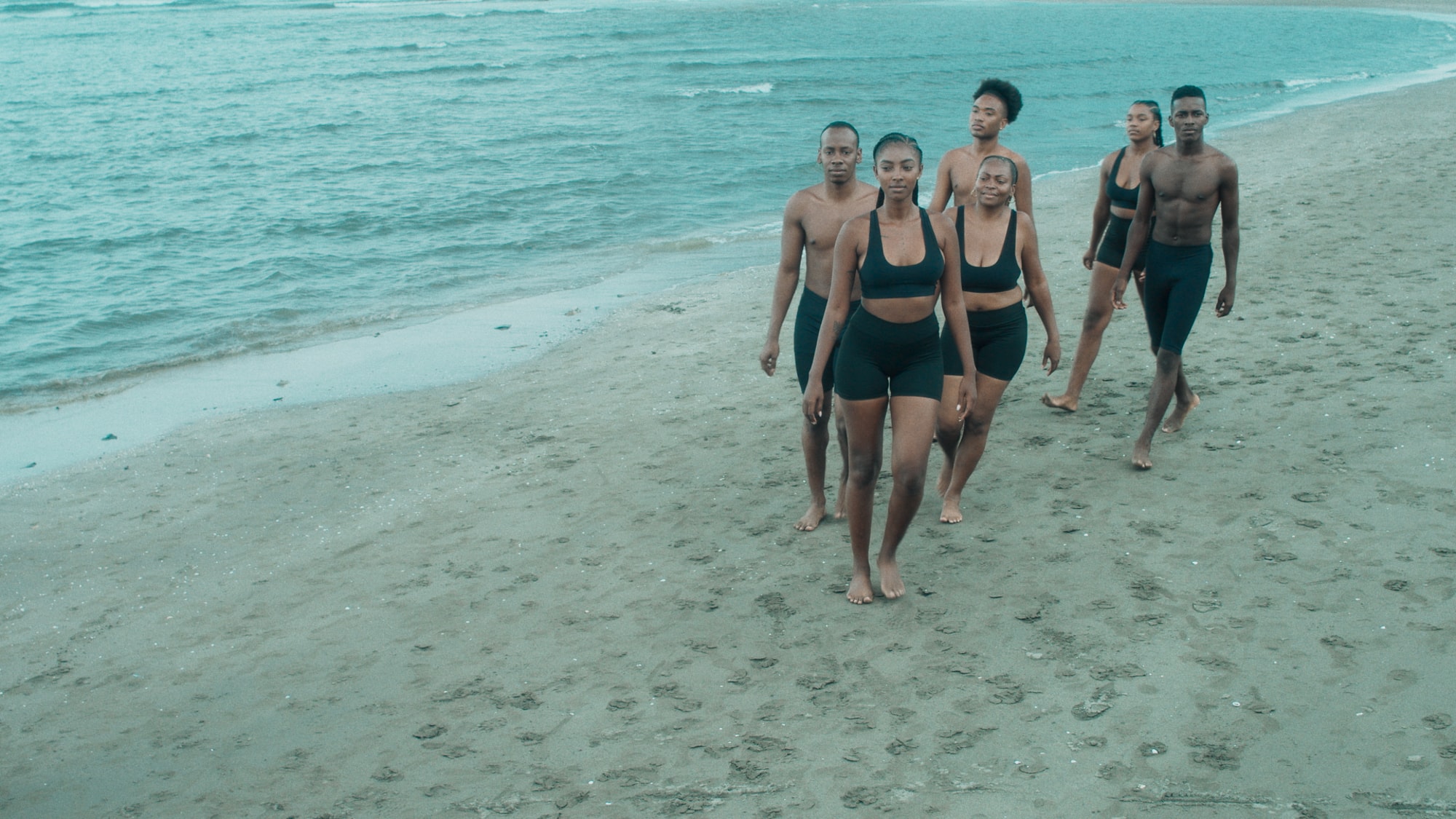
To wrap up, I want to ask you: What do you see as the main challenges of these movements for identity reclamation in Colombia or in other countries in Latin America?
For me, the individual challenge for each person is to fulfill their dreams, despite all the obstacles in achieving them. Because it’s tricky: indigenous and Black communities always have fewer opportunities. In their regions, there’s less education, and less access to clean water, leading to high rates of distraction and dropping out of school from a young age. In our society, this prevents Black and indigenous people from becoming who they want to be in the fields we aspire to.
That’s why stereotypes are so serious. Yes, many Black people might be amazing dancers, but there are also those who can be mathematicians, scientists, astronauts, and engineers. As a Black person, you’re born and raised believing you’re here to entertain at parties, to bring joy to gatherings, and that’s not true. In those kinds of contexts, it’s difficult to truly discover what you want to be; there are many insecurities. So, you ask yourself: will I be good at this? If it’s not what I was taught or what I see people from my community doing.
That’s why the most essential thing in these struggles is fulfilling a life’s desire and making it a reality.


